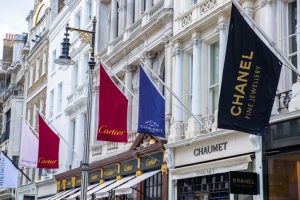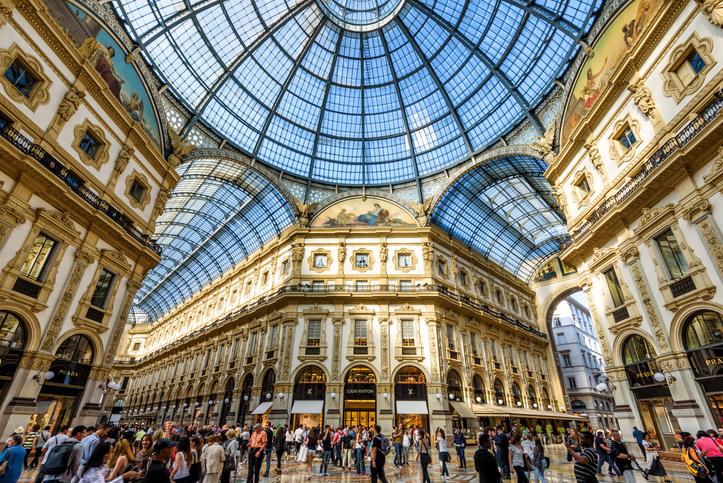Farfetch reported a 78% increase in the search word ‘Conscious’ year on year showing just how much people value ethically made clothes.
The retail industry going through a transition as their customers demand more sustainable and ethically made products. The exploitation of workers, false advertisement of their production chain, mass waste and more is being tolerated much less.
The Luxury Sector is a part of this evolution to keep up with customer demands and lower their environmental impact.
With importance placed on sustainability in all industries, including the music industry those such as Billie Eilish are making active choices to coincide with this and the fashion industry can't fall behind.
Why Designer brands need to transition
The emphasis placed on sustainability and ethics in the last few years has put the fashion industry in the spotlight. While designer brands might be more sustainable than fast fashion by creating a limited number of items and not producing mass amounts of clothes produced quickly. In this way luxury brands produce less waste and less environmental pollution.
However, There are still a number of issues that people have highlighted such as the cheap labour fashion brands exploit to create their products including low wages and setting up production is counties without worker protection laws. Many brands were found to have produced an item up to 90% complete before transporting it to the brands origin country, adding the finishing touches to market it as e.g. ‘Made in Italy’ despite the cheap labour used for the majority of the process. Their lack of transparency which is often revealed sparks criticism and can dissuade people from shopping there.
Farfetch reported a 78% increase in the search word ‘Conscious’ year on year showing just how much people value ethically made clothes. A brand as a business can benefit from recognising the importance of sustainability for customer satisfaction and public perception.
The second-hand market is growing rapidly with preloved items becoming the new craze to become more environmental and create less waste.
Bain & Company reveal that the second-hand market could account for 20% of the luxury brand revenue by 2030.
As well as the aim to become more sustainable as environmental choices become a priority for so many when shopping, the cost-of-living crisis and rising costs in various countries has tightened purses. When it comes to shopping people are opting for second hand and cheaper choices.

Luxury brand revenue
Despite the cost of living rising the luxury brands sector still expected a 5-10% growth from 2023 according to Good On You.
So far in 2024, the revenue made from luxury goods is $3.07bn which is down by 7.3% from 2023.
Reported by Simply Wall Street, Profit margins are decreasing as usually they run a profit margin of over 30%.
Is this cause for concern or will this pick up throughout the year?
The sustainability score for luxury brands
Good On You analyses and reviews brands and retail companies to understand how sustainable and ethical they are in every department so that shoppers can know where to go for conscious shopping.
They found that despite the luxury sector creating less waste and pollution by producing a limited amount and at a much slower rate than fast fashion brands they are still falling short.
They rated Stella McCartney ‘Good’ which was the highest of any luxury brand.
Stella McCartney is a member of the Ethical trading initiative and sustainable Apparel Coalition actively working on their sustainable goals.
Below that comes, Gucci, Balenciaga, Saint Laurent Burberry and other ‘Pre-Loved’ variations from luxury brands. These brands have made a start to reduce their green house gases through re-selling second hand items which reduces waste significantly.
Brands falling behind
Dior has no verified labour standards despite recycling some textile waste however, they rarely utilise low-impact materials. They also source cotton from an area in China which Is known for using forced labour, Xinjiang.
Hermes lack of transparency leads to uncertainty in their claims of sourcing animal materials for their leather products as well as claims that they are lowering their impact in an unknown way to the public. Without certified labour standards and clear ways they are improving their claims could just be that.
Ralph Lauren was found to be using unethical labour in 2022, exploiting their workers in an Indian factory by forcing them to work for continuous days with little to no breaks. Their claims of rectifying this have been unsupported so far.
Many other brands have unverified sustainability plans as well undisclosed workers’ wages and conditions leaving room for speculation as to why this is hidden. With this being such an important area of business being open with this would only benefit the brand, unless they have something to hide from the public.
The luxury sector has started the transition to maintain their customer base before they get left behind by new sustainable brands attracting attention. Which ones will make the improvement and which ones might fall behind?












